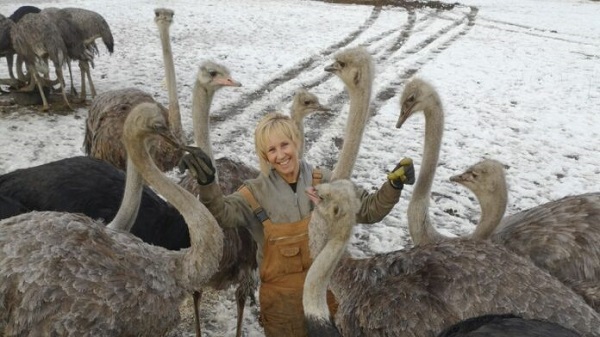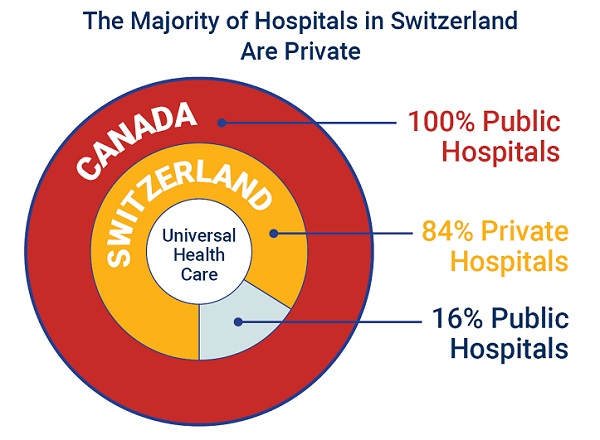Agriculture
Third Farm In Nanton, Alberta, Awarded Top Animal Welfare And Grassfed Certifications

NANTON, AB–Bar P Ranch, Ltd. is the third farming business in Nanton, Alberta, to be Certified Grassfed by A Greener World (AGW). This is the only certification and logo in the U.S. and Canada that guarantees food products come from animals fed a 100 percent grass and forage diet, raised outdoors on pasture or range for their entire lives, and managed according to the Certified Animal Welfare Approved by AGW leading welfare and environmental standards on an independent farm. While other grassfed labels exist, none has fully met consumer expectations when it comes to a grassfed and forage diet, environmental management, and farm animal welfare–until now.
Rob and Tami Palmer are both fourth-generation ranchers, raising grassfed Wagyu-Black Angus cattle on their ranch in Alberta. Their commitment to environmental stewardship and animal welfare is now verified by their new AGW certifications. The Palmers applied for the Certified Animal Welfare Approved by AGW and Certified Grassfed by AGW labels so they can sell grassfed beef cattle to their friends at nearby TK Ranch, one of Canada’s leading retailers of Certified Grassfed by AGW beef, although they will also continue selling high-quality, grassfed beef directly to customers under the Bar P Ranch brand.
According to recent research, demand for grassfed beef has increased by 25-30 percent every year over the last decade. But while demand for grassfed meat is sky-rocketing, not all grassfed labels are meeting consumer expectations–and some continue to permit highly questionable practices. Some meat currently marketed as grassfed could come from animals confined on dirt feedlots for long periods outside the growing season, or where growth hormones and subtherapeutic antibiotics are used–just as long as they were fed cut grass or forage.
AGW’s respected Certified Grassfed label is the only grassfed animal welfare label in North America. Unique among food labels, it guarantees:
- Ruminant animals raised outdoors on pasture for their entire lives, with a 100 percent grass and forage diet
- Animals raised according to the highest animal welfare and environmental standards in the U.S. and Canada
- High-welfare handling, transport, and slaughter of animals–including an annual review of slaughter facilities
Certified Grassfed by AGW is an optional, additional accreditation for farmers meeting Certified Animal Welfare Approved by AGW standards of production. Certified Animal Welfare Approved by AGW has been lauded by Consumer Reports as the only “highly meaningful” label for farm animal welfare, outdoor access and sustainability.
AGW Director of Communications and Outreach Emily Moose says:
“No other grassfed label can match the breadth, integrity, and transparency offered by AGW’s practical and achievable Certified Grassfed standards and certification procedures. We’re proud to support farmers and ranchers like Bar P Ranch, Ltd. and to help them promote their high-quality grassfed meat and sustainable farming practices to the public.”
Certified Animal Welfare Approved by AGW, Certified Grassfed by AGW beef from Bar P Ranch, Ltd. is available directly from the ranch, as well as under the TK Ranch label (see link above). For more information about Bar P Ranch, Ltd., visit barpranchbeef.com and find them on Facebook. Contact Tami Palmer at 403-646-5402 and [email protected].
For more information about Certified Grassfed by AGW visit https://agreenerworld.org/solutions-and-certificates/certified-grass-fed/.
ABOUT A GREENER WORLD
A Greener World (AGW) identifies, audits, certifies and promotes practical, sustainable farming systems by supporting farmers and ranchers and informing consumers. AGW’s growing family of trusted certifications includes Certified Animal Welfare Approved by AGW, Certified Grassfed by AGW and Certified Non-GMO by AGW. Each program is designed to have positive and measurable impacts on the environment, society and animals, and to encourage truly sustainable farming practices. AGW’s standards and procedures are robust and transparent and achievable.
A nonprofilt funded by public donations and membership, A Greener World offers a range of resources to help people make informed food choices, including an Online Directory of certified farms and products and Food Labels Exposed–a definitive guide to food label claims (available in print, online, and as a smartphone app). For more information visit agreenerworld.org.
For more stories visit Todayville.com
Agriculture
Canada Greenlights Mass Culling of 400 Research Ostriches Despite Full Recovery from Bird Flu Months Ago

 Nicolas Hulscher, MPH
Nicolas Hulscher, MPH
Federal court upholds CFIA’s reckless cull order—setting a dangerous precedent for the unscientific mass depopulation of genetically important animals.
In March, I interviewed Katie Pasitney of Universal Ostrich and Connie Shields to discuss the alarming implications of the Canadian Food Inspection Agency (CFIA) order to cull 400 research ostriches at Universal Ostrich Farm in British Columbia over bird flu:
Canada Orders Mass Culling of 400 Research Ostriches Over Bird Flu, Refuses to Test Surviving Birds for Natural Immunity
·The Canadian Food Inspection Agency (CFIA) has ordered the culling of 400 ostriches at Universal Ostrich Farm in British Columbia, citing concerns over H5N1 bird flu. However, this decision is not based on sound science and could have serious consequences for both food security and medical research.
Universal Ostrich Farm is a research facility focused on studying the unique antibody-producing capabilities of ostriches. Their research has demonstrated potential in neutralizing viruses, bacteria, and even COVID-19, making it an important contribution to medical science.
In December 2024, the CFIA claimed that two deceased ostriches—which had been lying outside for over 16 hours—tested positive for H5N1 via PCR testing. Just 41 minutes after receiving these results, the CFIA signed an order to cull the entire flock.
The CFIA initially granted the farm an exemption, recognizing the birds as “genetically important.” Later, without clear justification, they reversed this decision, ordering their destruction.
Despite the importance of this research, the CFIA has refused to conduct further testing on the birds and has banned the farm from conducting its own tests, under threat of heavy fines and possible imprisonment. Why is the Canadian government refusing to study the potential antibodies ostriches have developed against H5N1 bird flu?
On January 31, 2025, a court granted a temporary stay of execution, halting the cull. However, the CFIA is appealing this decision, which means the culling could still proceed.
Today, we have received news that the reckless mass cull order will proceed despite their ostriches having already recovered months ago and developed natural immunity against H5N1:

Official Announcement: Federal Court Decision in Universal Ostrich Farms Inc. v. Canadian Food Inspection Agency
Dear friends and supporters,
We are absolutely devastated to share today’s Federal Court decision, issued on May 13, 2025. The court ruled in favour of the Canadian Food Inspection Agency (CFIA), upholding their order to destroy our beloved ostriches and rejecting our plea to save them.
The court’s decision accepted the CFIA’s justification under the Health of Animals Act and their use of the Stamping-Out Policy, which mandates the destruction of animals to control disease outbreaks, regardless of their health status. The court confirmed the CFIA’s approach, prioritizing trade obligations over the welfare of our animals.
In addition, we’ve been ordered to pay $15,000 in CFIA’s legal costs. You can read the full decision here: (2025 FC 878). https://saveourostriches.com/wp-content/uploads/2025/05/JR-T-294-25-and-T-432-25-Final.pdf
We are heartbroken by this outcome and uncertain about the future of our farm. As we navigate this incredibly difficult time, we ask for your patience and continued support. If you are able, please consider making a donation to help us manage the financial and emotional toll this has taken.
Thank you,
Universal Ostrich Farm
http://SaveOurOstriches.com
This deeply misguided decision sets a dangerous precedent for the Canadian government to recklessly depopulate animals at will.
By upholding the CFIA’s reckless cull order, despite the ostriches’ recovery and natural immunity, the court has prioritized trade protocols over scientific inquiry, animal welfare, and the advancement of life-saving medical research.
Epidemiologist and Foundation Administrator, McCullough Foundation
www.mcculloughfnd.org
Please consider following both the McCullough Foundation and my personal account on X (formerly Twitter) for further content.
Agriculture
Canada is missing out on the global milk boom

This article supplied by Troy Media.
 By Sylvain Charlebois
By Sylvain Charlebois
With world demand soaring, Canada’s dairy system keeps milk producers locked out of growth, and consumers stuck with high prices
Prime Minister Mark Carney is no Justin Trudeau. While the team around him may be familiar, the tone has clearly shifted. His first week in office signalled a more data-driven, technocratic approach, grounded in pragmatism rather than ideology. That’s welcome news, especially for Canada’s agri-food sector, which has long been overlooked.
Historically, the Liberal party has governed with an urban-centric lens, often sidelining agriculture. That must change. Carney’s pledge to eliminate all interprovincial trade barriers by July 1 was encouraging but whether this includes long-standing obstacles in the agri-food sector remains to be seen. Supply-managed sectors, particularly dairy, remain heavily protected by a tangle of provincially administered quotas (part of Canada’s supply management system, which controls prices and limits production through quotas and tariffs to protect domestic producers). These measures stifle innovation, limit flexibility and distort national productivity.
Consider dairy. Quebec produces nearly 40 per cent of Canada’s milk, despite accounting for just over 20 per cent of the population. This regional imbalance undermines one of supply management’s original promises: preserving dairy farms across the country. Yet protectionism hasn’t preserved diversity—it has accelerated consolidation.
In reality, the number of dairy farms continues to decline, with roughly 90 per cent now concentrated in just a few provinces. On our current path, Canada is projected to lose nearly half of its remaining dairy farms by 2030. Consolidation disproportionately benefits Quebec and Ontario at the expense of smaller producers in the Prairies and Atlantic Canada.
Carney must put dairy reform back on the table, regardless of campaign promises. The sector represents just one per cent of Canada’s GDP, yet
wields outsized influence on policy, benefiting fewer than 9,000 farms out of more than 175,000 nationwide. This is not sustainable. Many Canadian producers are eager to grow, trade and compete globally but are held back by a system designed to insulate rather than enable.
It’s also time to decouple dairy from poultry and eggs. Though also supply managed, those sectors operate with far more vertical integration and
competitiveness. Industrial milk prices in Canada are nearly double those in the United States, undermining both our domestic processors and consumer affordability. These high prices don’t just affect farmers—they directly impact Canadian consumers, who pay more for milk, cheese and other dairy products than many of their international counterparts.
The upcoming renegotiation of CUSMA—the Canada-United States-Mexico Agreement, which replaced NAFTA—is a chance to reset. Rather than resist change, the dairy sector should seize the opportunity to modernize. This includes exploring a more open quota system for export markets. Reforms could also involve a complete overhaul of the Canadian Dairy Commission to increase transparency around pricing. Canadians deserve to know how much milk is wasted each year—estimated at up to a billion litres—and whether a strategic reserve for powdered milk, much like our existing butter reserve, would better serve national food security.
Global milk demand is rising. According to The Dairy News, the world could face a shortage of 30 million tonnes by 2030, three times Canada’s current annual production. Yet under current policy, Canada is not positioned to contribute meaningfully to meeting that demand. The domestic focus on protecting margins and internal price fairness is blinding the sector to broader market realities.
We’ve been here before. The last time CUSMA was renegotiated, Canada offered modest concessions to foreign competitors and then overcompensated its dairy sector for hypothetical losses. This created an overcapitalized industry, inflated farmland prices and diverted attention from more pressing trade and diplomacy challenges, particularly with India and China. This time must be different: structural reform—not compensation—should be the goal.
If Carney is serious about rebooting the Canadian economy, agri-food must be part of the conversation. But that also means the agriculture sector must engage. Industry voices across the country need to call on dairy to evolve, embrace change and step into the 21st century.
Dr. Sylvain Charlebois is a Canadian professor and researcher in food distribution and policy. He is senior director of the Agri-Food Analytics Lab at Dalhousie University and co-host of The Food Professor Podcast. He is frequently cited in the media for his insights on food prices, agricultural trends, and the global food supply chain.
Troy Media empowers Canadian community news outlets by providing independent, insightful analysis and commentary. Our mission is to support local media in helping Canadians stay informed and engaged by delivering reliable content that strengthens community connections and deepens understanding across the country.
-

 Alberta2 days ago
Alberta2 days agoAlberta’s grand bargain with Canada includes a new pipeline to Prince Rupert
-

 Bruce Dowbiggin22 hours ago
Bruce Dowbiggin22 hours agoWOKE NBA Stars Seems Natural For CDN Advertisers. Why Won’t They Bite?
-

 Business2 days ago
Business2 days agoCarney’s European pivot could quietly reshape Canada’s sovereignty
-

 Health17 hours ago
Health17 hours agoLast day and last chance to win this dream home! Support the 2025 Red Deer Hospital Lottery before midnight!
-

 Business12 hours ago
Business12 hours agoCarney praises Trump’s world ‘leadership’ at G7 meeting in Canada
-

 Crime8 hours ago
Crime8 hours agoUK finally admits clear evidence linking Pakistanis and child grooming gangs
-

 Energy23 hours ago
Energy23 hours agoCould the G7 Summit in Alberta be a historic moment for Canadian energy?
-

 conflict16 hours ago
conflict16 hours agoIsrael bombs Iranian state TV while live on air





